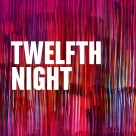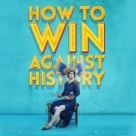Frank Dunlop completed creation of the theatre venue in 1970, a breeze-block building on The Cut constructed out of a former butcher's shop and an adjacent bomb-site. It was intended to last for five years, but has become permanent.
The auditorium, with a thrust stage, has a capacity of 420. The configuration can vary depending on the needs of each production.
In addition to the Young Vic's main house, there are now two smaller theatre spaces. The Maria, named after theatre designer Maria Bjornson, is the larger of the two with a capacity of 150. The Clare, named after the former artistic director of the Sheffield Crucible, Clare Venables, seats 70. Like the main house, both smaller theatres have flexible seating configurations which can be arranged to suit the production design. In the two smaller auditoriums seating is unreserved, with the actors performing in close proximity to the audience.
The Young Vic primarily performs classic plays, but often in innovative productions. Many well-known actors have worked at the Young Vic including Ian Charleson, who made his memorable professional debut with the Young Vic 1972–74, and who played Jimmy Porter in Look Back in Anger and Hamlet in the first revival of Stoppard's Rosencrantz and Guildenstern Are Dead in 1973. Others include Vanessa Redgrave, Helen Mirren, Judi Dench, Timothy Dalton, Robert Lindsay, Willard White, John Malkovich, Michael Sheen and Arthur Lowe.
Quintessential rock band The Who held free, weekly concerts at the Young Vic in early 1971 in order to rehearse what would become their masterpiece album, Who's Next. One of these shows was released on the Deluxe edition of this album.
A memorial at the theatre's south-east corner commemorates the 54 people killed in 1941 while sheltering in the cellars of the former building on the site, during the Blitz.
In 1982 the theatre hosted a Poetry Olympics, where comedian Pat Condell took part.



























































Are you a fan? leave your comment